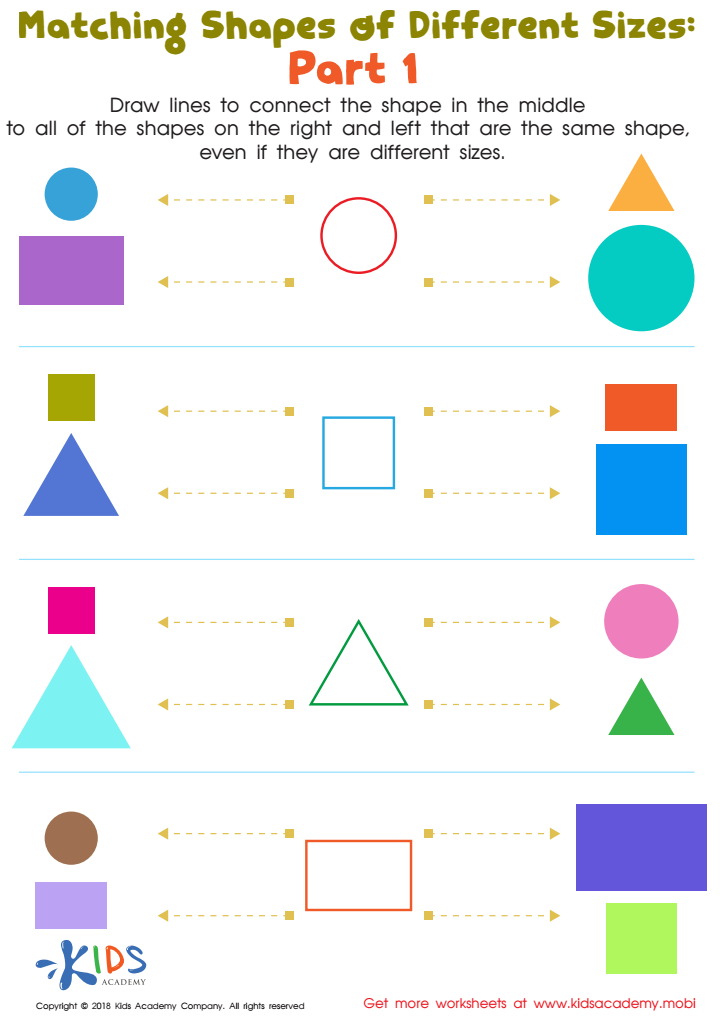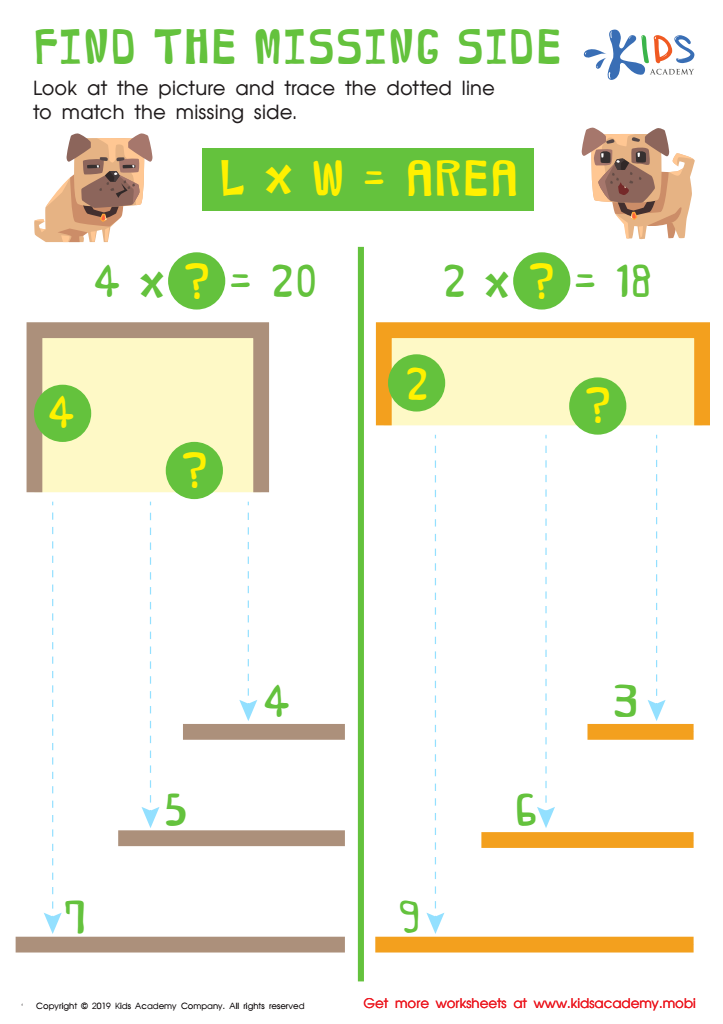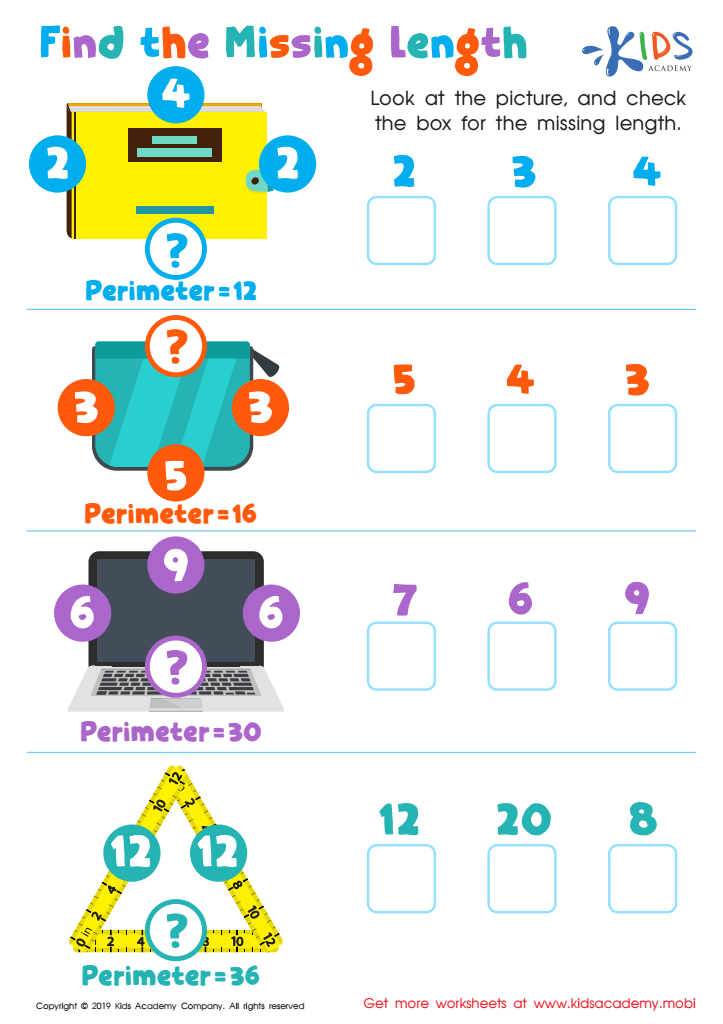Understanding geometry Worksheets for Kids
4 filtered results
-
From - To


Golf Maze: Curved and Flat Surfaces Worksheet


Geometry: part 1 Worksheet


Find the Missing Side Worksheet


Find the Missing Length Worksheet
Question/Answer
How to train the Understanding geometry skill in Grade 3 students learning about Geometry?
To train Grade 3 students in Understanding Geometry, focus on interactive and visual learning methods. Use shape manipulatives, geometric puzzles, and drawing exercises to explore different shapes and their properties. Incorporate activities that involve classifying shapes, understanding symmetry, and recognizing geometric figures in the environment. Reinforce learning with problem-solving tasks that apply geometric concepts.
How does the mastery of the Understanding geometry skill affect a student's performance at an early age?
Mastery of the Understanding Geometry skill at an early age significantly enhances a student's spatial reasoning, problem-solving abilities, and mathematical thinking. It lays a solid foundation for advanced mathematical concepts and STEM-related fields, thereby improving overall academic performance. Early mastery also boosts confidence in tackling geometric problems, encouraging continuous learning and interest in mathematics.
How to test a Grade 3 student’s Understanding geometry skills?
To test a Grade 3 student's understanding of geometry skills, create a quiz or practical activity that includes identifying and drawing basic shapes, recognizing and measuring angles, understanding symmetry, and solving simple perimeter and area problems. Incorporate visual aids and hands-on tasks to assess both conceptual understanding and practical application.

 Assign to the classroom
Assign to the classroom












